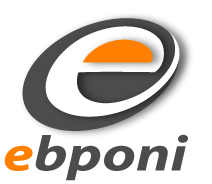
Dear, visitor, this is the best way to learn about What is Digital Marketing and how it works in Bangladesh. Now, I reveal a thesis paper which is given below. I hope you will get a comprehensive solution and guidelines about all sorts of digital marketing points of view.
First of all, I have learned about the 4 P’s of marketing. They are:
Product, Place, Price & Promotion
Product refers to the goods or services that a business or company will provide. The product involves understanding the customer’s needs and differentiating them from competitors in the market.
The place is where I will market the product demographically for maximum profit. And proper distribution to the target audience.
Price is the amount of money a customer is willing to pay based on the product quality etc. The psychological effects of customers have a great role in the price of a product.
Promotion involves all the activities of a business. That uses to communicate and promote its products or services to the target audience.
One of the digital marketer’s main goals is to reach their product to the target audience.
Promotions are of 2 types
- Paid promotion
- Organic promotion
Promotion is nothing but advertisement.
Session-2
We will do all digital marketing on the web.
The domain is the full name of a website. All domains have an IP Address. The domain is an easy alternative to the IP Address of a website. Subdomain is an extra small domain extended with an existing domain.
Google mainly factors for the customers and users based on the following factors:
Domain Factors-
Domain age: The age of a domain. Old domains are trusted by Google more.
Keywords appear in Top Level Domain:
The required keywords will increase the audience for the specific content/product in Google and will be ranked more.
Public vs Private WhoIs: The information of the domain owner is visible to the public or not.
Country TLD extension:
Having a Country Code Top Level Domain (.us, .bd, .in) can help the site rank for that particular country.
Penalized WhoIs Owner:
If a person hosts a domain and his domain is penalized by Google. Because of him, and if I use that same domain, my rank will quite drop.
Page-level factors:
- Keyword in title tag:
The keyword is included in the title tag of a webpage, which helps Google understand the page’s topic. - Keyword in description tag:
If the keyword is included in the description tag of a webpage, it will help rank the web. - Keyword appears in H1 tag:
The keyword is used in the heading tag of a webpage. It also helps rank the web indicating its relevance to the page’s content. - Content length: Refers to the overall amount of text or content present on a webpage. The more content length, the better the rank of the web.
- Table of contents:
An organized list of sections or topics within a webpage. That is usually located at the beginning for easy navigation. - Latent Semantic Indexing (LSI) keywords in content:
Keywords related to the main topic that help Google understand the relevance of the content. - LSI keywords in title and description tags:
Related keywords are included in the title and description tags of a webpage to enhance its visibility and relevance. - The page covers the topic in-depth:
The webpage provides comprehensive and detailed information about a specific topic. - Page loading speed via HTML: The time it takes for a webpage to load and display its content to users. It is influenced by the web page’s programming. Slower loading speeds of webpages have a huge negative impact on rank and audience retention.
- Use of AMP:
AMP (Accelerated Mobile Pages) is a framework of web pages on mobile devices. It’s improving the mobile browsing experience. It also helps rank the web by Google for mobile users. - Duplicate content:
When identical or very similar content appears on multiple web pages. It can negatively impact Google’s rankings. - Image optimization:
The process of reducing image file sizes and optimizing for max user experience. - Content recency:
The recentness of the content on a webpage indicates how up-to-date the information is. - Content updates:
Regularly updating and adding new content to a webpage to keep it relevant and engaging for users. - Keyword prominence (above the fold):
The placement of a keyword within the visible portion of a webpage without scrolling, typically at the top of the page. - Keyword in H2, H3 tags: The keyword is included in subheadings within the content for better ranking.
- Grammar and spelling:
The correct usage of language, including proper grammar. And spelling helps the reading experience of users and thus helps rank the web. - Mobile-friendly update: The update that prioritizes mobile-friendly webpages in search results.
Site-level factors:
- Contact-us page:
A webpage on a website that provides contact information and allows users to reach out to the website owner or company. - Site architecture:
The organizing style and structure of a website, including its navigation, menus, etc. - Site updates:
Regular changes and improvements made to a website’s content, functionality, etc. to keep it fresh & relevant. - Site uptime:
The duration during which a website is accessible and available to users without experiencing any downtime or technical issues in servers. - Server location:
The physical location of the server hosting a website, which can impact website loading speed and user experience based on the proximity of the server. It’s better for a person to host a domain from the person’s nearest domain hosting services.. - SSL Certificate:
SSL (Secure Sockets Layer), is a digital certificate that establishes a secure encrypted connection between a website and a user’s browser. - Breadcrumb navigation:
A type of website navigation that displays the path to previous pages/contents making it easier for users to navigate the website. - Mobile optimized:
Mobile optimization is a page-level factor for a website design and layout that is specifically tailored and optimized for smooth and user-friendly interaction on mobile devices. - YouTube:
If an organization/company makes content on Youtube regularly and keeps customers/users engaged, the Google algorithm will take this into note and increase the domain rank more (Youtube is a concern of Google so the Google algorithm takes youtube as a site-level factor)
User interaction factors:
- Organic click-through rate:
The percentage of users who click on a website’s organic search result when it appears in Google search. - Bounce rate:
The percentage of visitors who leave a website after viewing only a small amount of time indicates a lack of engagement in websites. This is a very negative thing and can drop the website’s rank a lot. - Direct traffic:
If a person searches for a product/content with the website’s name included in the search, Google will direct the user to the specific website directly. It ranks the domain better. - Repeat traffic:
Repeat traffic is users who return to a website multiple times, indicating loyalty towards the domain, which ranks up the domain a lot better. - Chrome bookmarks:
Chrome bookmarks are saved website links within the Chrome browser by the users. It exponentially has an impact on Google’s algorithm and ranks up the specific website. - A number of comments:
The number of comments left on a website, the more comments, the website rank increases. - Geo-targeting:
Delivering products or advertisements to users based on their geographical location is called Geo-targeting. Proper geo-targeting will help increase the rank of the website.
